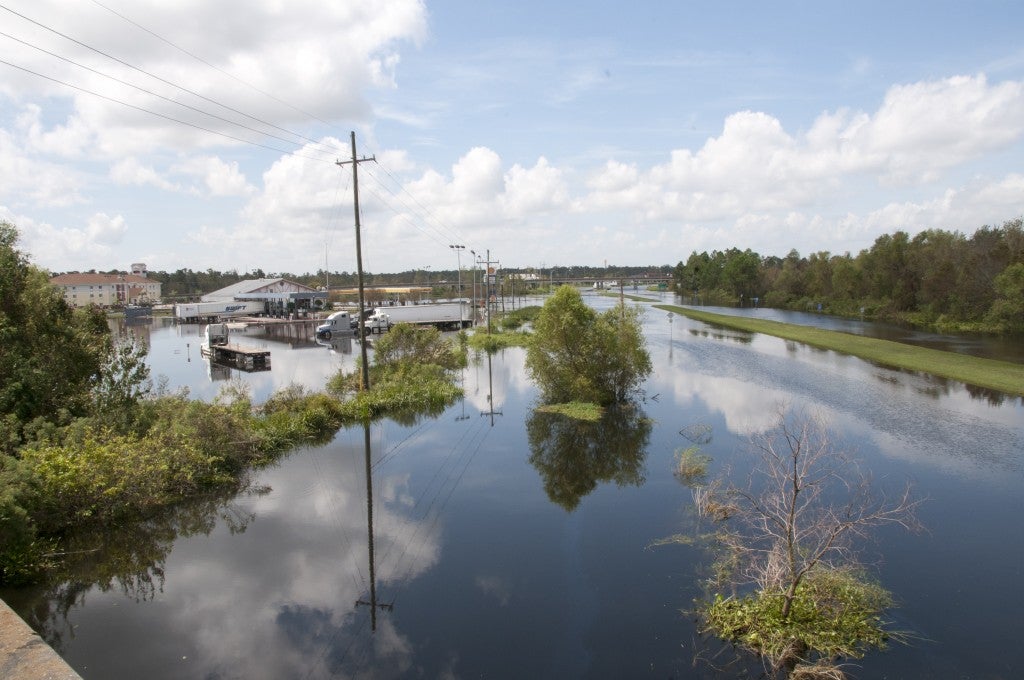Improving implementation of the new Federal Flood Risk Management Standard
By Shannon Cunniff, Deputy Director, Water Program, Environmental Defense Fund
This is part two of a two-part series about the new Federal Flood Risk Management Standard.
Hurricane Katrina and Super Storm Sandy clearly illustrated the significant effects storms and flooding can have on the nation’s economy and security. So it’s not surprising that the President tapped the National Security Council to lead an interagency team to develop additional means to reduce the impact and cost of floods to the nation.
To develop the Federal Flood Risk Management Standard, the Council built upon work done by the Hurricane Sandy Rebuilding Task Force and its Hurricane Sandy Rebuilding Strategy, that recommended the federal government create a national flood risk standard for federally-funded projects beyond the Sandy-affected region.
In developing the Standard, the National Security Council should have used more transparency. For example, it doesn’t appear the Council consulted with Louisiana’s community leaders and others affected by Hurricane Katrina. That’s hard to understand, given the impacts that storm had on the region.
In addition to gaining understanding of the different and separate conditions around the nation, outreach also might have resulted in greater understanding among stakeholders of the intent behind the executive order and engendered less anxiety about its impact from those outside of Washington. To that end, such outreach very likely would have resulted in less confusion and consternation about the order, yielding a better result.
Implementing the Federal Flood Risk Management Standard
There are two steps to full implementation of the Standard. The first started with development and issuance of its draft Implementing Guidelines. The Administration has provided an extended opportunity for public comment on these overarching guidelines, which is currently scheduled to close on May 6, 2015. The second step will be development of detailed guidelines by each affected federal agency that reflect their authorities and programs.
Until the implementing agencies develop their guidelines, specific concerns about what the standard will mean can’t be fully answered. This causes increased anxiety among stakeholders.
Making sure implementation works for Louisiana
In the current public comment period, there are three significant ways to ensure application of the executive order works for Louisiana and other states that have real concerns about the outcomes:
First, commenters can identify clarifications needed in the final overarching Implementing Guidelines so that they set clear direction and sideboards, yet retain flexibility. These parameters will then guide each federal agency in developing its own implementing guidelines
Second, commenters can seek desired improvement in the public dialogue on flood risk management by suggesting that these final Implementing Guidelines direct federal agencies to engage in meaningful dialogue before and as they develop their own program-specific guidelines.
Lastly, commenters can identify issues and questions that each federal agency should carefully consider when drafting their program-specific guidelines.
While the White House could have done a better job engaging other regions of the U.S. prior to establishing its Federal Flood Risk Management Standard, let’s embrace opportunities to engage in meaningful dialogue to establish flexible policies that encourage and enable communities to improve their resiliency. To send comments on the draft Implementing Guidelines, click here and then search for the notice in docket ID FEMA-2015-0006.
If you missed it, check out part one of this series: The new Federal Flood Risk Management Standard.
